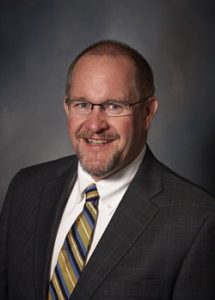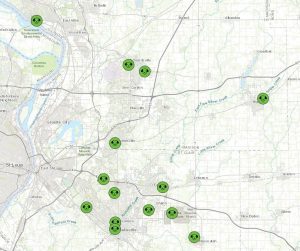Metro East news briefs
October 30, 2019Metro East mayors back pension reform
The Southwestern Illinois Council of Mayors (SICM) is urging the Illinois General Assembly to approve municipal pension reform during the legislature’s fall veto session.
Gov. J.B. Pritzker wants lawmakers to approve consolidation of the state’s 649 downstate and suburban, municipal fire and pension plans; as proposed Oct. 10 in recommendations from the governor’s Pension Consolidation Feasibility Task Force.
Annual fiscal reports show underfunding has become a serious problem for local fire and police pension plans across the state.
However, many police pension boards around the state reportedly oppose consolidation, citing reduced local control over funds.
In some municipalities, the Illinois Office of the Comptroller has begun redirecting tax funds, collected by the state, to shore up pension plans.
Among them: East St. Louis where the state last month began diverting revenues to East St. Firefighters Pension Plan.
As a result of the revenue loss, East St. Louis administrators will temporarily close the city’s Fire Station Number 4 and lay off nine firefighters, this Thursday (Nov 1).
Consolidation could help stabilize the retirement plans by generating as much as $1 million a day in additional returns, notes council president and Fairview Heights Mayor Mark Kupsky, in a letter from the mayors to lawmakers.
It could also benefit firefighters and police by reducing required retirement plan contributions, according to the SICM.
Firefighters, on average, currently contribute more than $1,000 per pay period to their pension funds.
Most other city workers, who participate in the state’s consolidated municipal employee pension plan, contribute a little over $300, according the council of mayors.
The council of mayors voted to endorse the proposed pension reform during their Oct. 24 meeting.
District 189 goals: teacher incentives, parent engagement, career training
Seven years after the State Illinois effectively took control of East St. Louis School District 189, academic achievement is slowly-but-surely improving, Superintendent Arthur Culver told the Illinois State Board of Education (ISBE) during a rare meeting in the district, Oct. 13-14.
However, community conditions, teacher shortages, chronic absenteeism, and fiscal stability remain challenges for this district, Culver acknowledged.
After five years of as a de-accredited school system, District189 this year earned system-wide five-year accreditation through AdvancED, Culver noted. All district schools, including the Vivian Adams Early Childhood Center, are also accredited through 2024.
The ISBE’s, 2018 school district “report cards” rate four district schools as “commendable”; although five remain about the lowest performing schools in the state.
Schooldigger.com – which ranks educational institutions based on data from the National Center for Education Statistics, U.S. Department of Education, U.S. Census Bureau, Illinois Department of Public Health and ISBE – bumped the district up 10 places this year.
All schools within the district also rose in the Schooldigger rating —variously from 36 to 174 places.
To continue the improvement, Culvert outlined seven goals for the district’s 2020 fiscal year:
▪ Hiring incentives for hard-to-fill teaching positions, such as foreign language, upper level math, science and special services,
▪ Performance-based bonuses to recruit and retain teachers,
▪ Additional staff to meet the social-emotional needs of students,
▪ Parent engagement services,
▪ Instructional support to academically, intellectually, and personally challenge students in new ways – a concept known in academia as “rigor,”
▪ Expand competency-based education at the district’s Wyvetter Younge Alternative Center, and
▪ Career exploration programs, with career and technical education activities at the high school level.
Poverty, violence and substance abuse in East St. Louis continue to have traumatic effects on district students, Culver emphasized, explain the goals.
Excessive turnover is a major factor in the district’s chronic teacher shortages, Culver said. The district usually has 25 to 30 teacher vacancies at the end of each school year. Generally, 10 to 15 teachers generally quit during the first three months of each academic year.
Teacher salaries and benefits fall below those of other districts, while class sizes are larger, he adds.
Chronic absenteeism has been reduced since the 2017 school year, when it was deemed a problem for 88 percent of district students. However, the districtwide chronic absenteeism rate is still 66 percent, this school year.
Underlying all the district’s problems: the East St. Louis economy. District 189 receives the bulk of its revenues from federal and state sources, rather than local taxes.
Illinois’ new Evidence-Based Funding system, designed to provide greater financial resources for economically disadvantaged school districts, will benefit District 189, Culver said.
However, the district still projects a $9,753,659 budget deficit for its 2020 fiscal year; leaving an ending balance of $58,334,323; or 6.4 months of reserves.
The district’s budget deficit is anticipated to grow to $14,167,212 in fiscal year 2023; leaving an ending balance $19,515,436 or 1.94 months of cash reserves.
Culver is requesting $6 million in supplemental funding from the ISBE for District 189’s coming fiscal year.
The ISBE effectively took control of Dist. 189 in 2012; making Culver superintendent, establishing a financial oversight board, and agreeing to provide supplemental state funding for the district.
The action came after the school district failed to meet federal academic standards for nine consecutive years.
Edwardsville plants 400 trees
The William C. Drda Woods — one of Illinois’ oldest hardwood forests — now has 400 more trees, thanks to a mass planting, Oct. 25.
The forest, 5404 New Poag Road near SIUE’s Axis student housing, was acquired by the City of Edwardsville in 2018, using a grant from the Illinois Clean Energy Foundation.
The tree planting was designed to restore a section which had been deforested and used as farmland; using native trees to enhance the ecological impact of the area and restore wildlife habitat.
Ecologically minded volunteers provided most of the labor. The city called a similar volunteer “work day” at the site last October, following the purchase of the property.
The Drda Woods restoration is part of an ambitious city forestry program, overseen by the Edwardsville Beautification and Tree Commission and administered by the city arborist.
The city each year splits the cost of residential tree planting with citizens, up to $75.
The HeartLands Conservancy – a Belleville-based environmental group that helped organize the tree planting – honored the city’s efforts with its Green Leaf awards, during the organization’s 30th anniversary celebration, the same day, in St. Louis.
New map shows area dog parks
Metro East area dog owners, looking for specially designated sites to walk their pets, can now consult the new, online “Dog Parks of the Metro East” map, released last week by the Metro East Park and Recreation District.
The map identifies14 dog parks across Madison and St. Clair County; complete with pop-up details including size, entry restrictions and contact information.
District officials admit they may have missed some parks and ask dog lovers around the region to suggest additional sites.
The map can be accessed at www.meprd.org/dog-parks.









